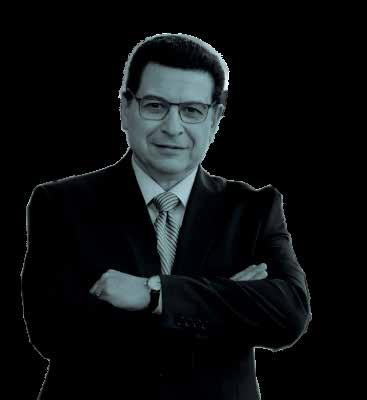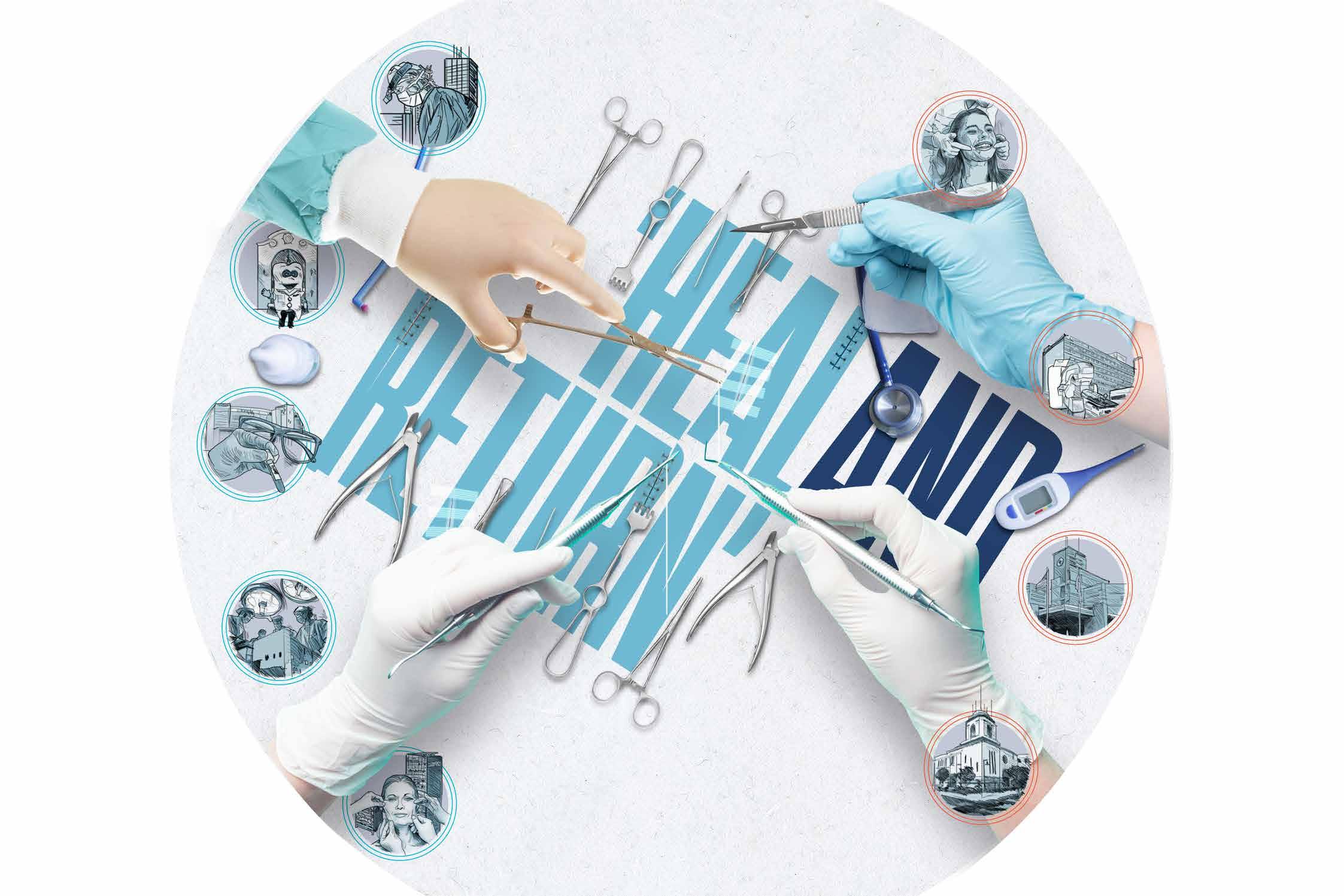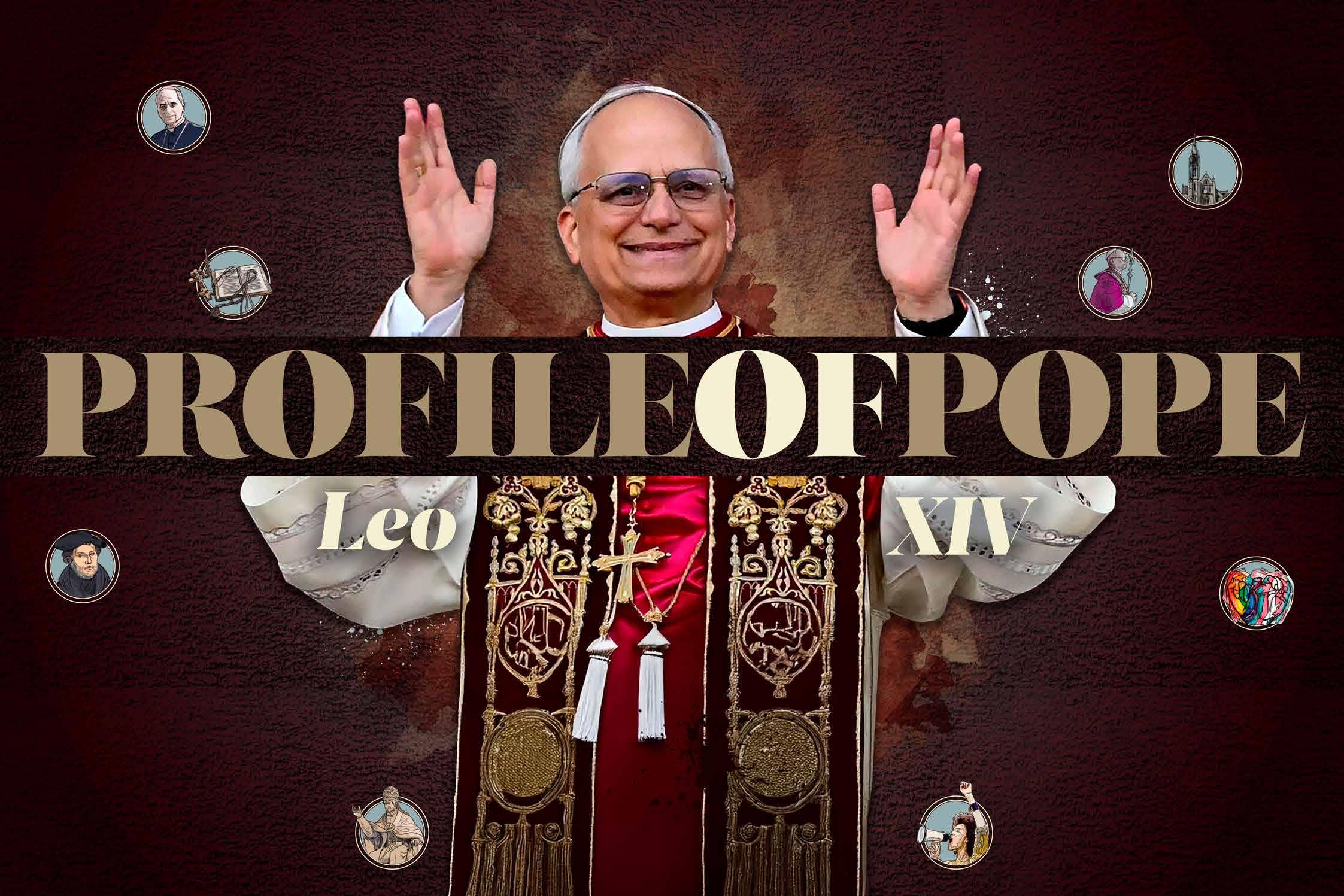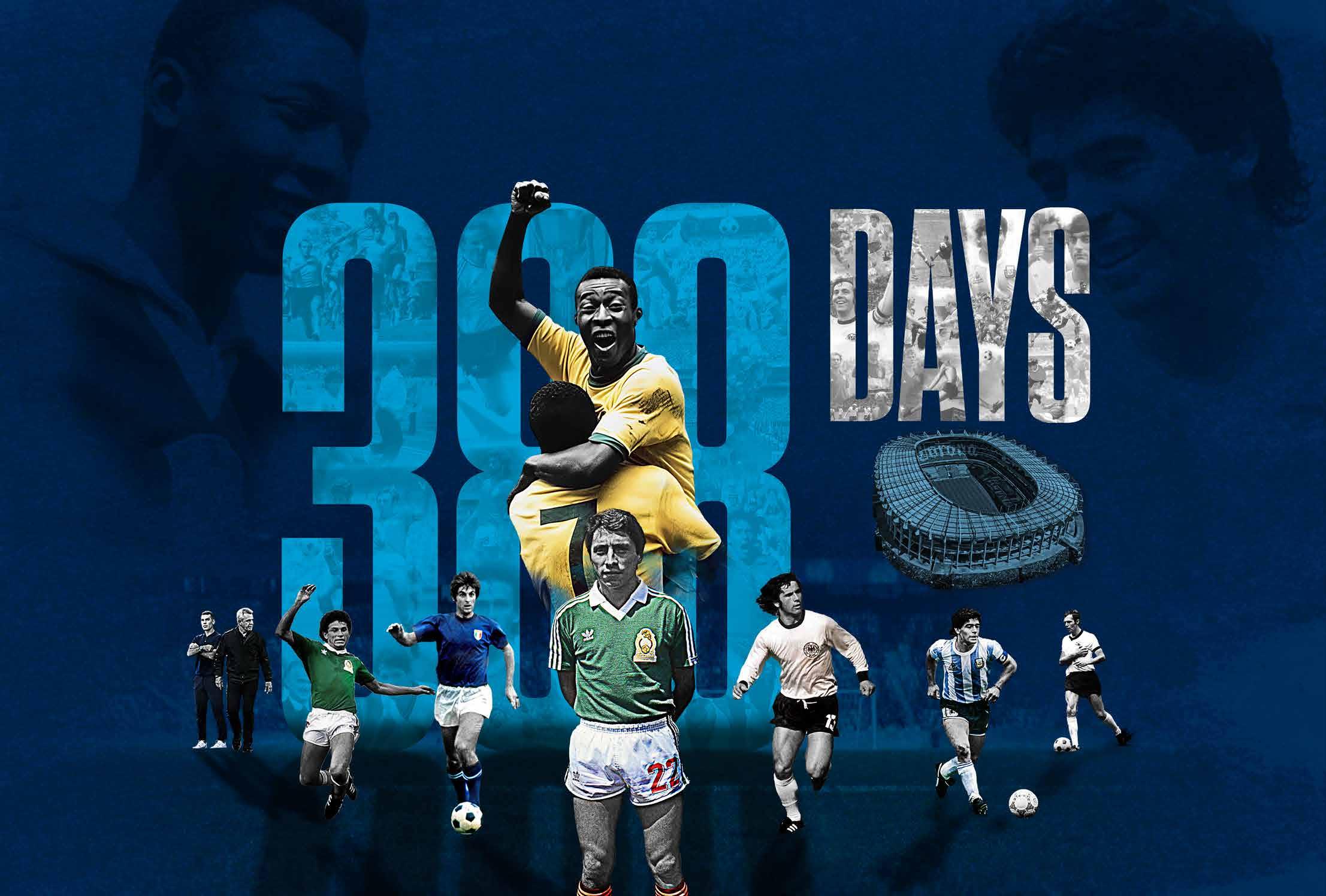

Political Battlefield: Health
THE PRESENT OF THE PEOPLE THAT WILL DETERMINE THEIR FUTURE


BY: DR. ILAN SHAPIRO
ARTWORK: IVAN BARRERA
This program—created in 1965— was designed to ensure that people with fewer financial resources could access quality medical care. Today, more than 76 million people in the U.S. depend on Medicaid. That’s more than one in five Americans. But here’s what matters most: Medicaid isn’t just insurance for a few—it’s the silent backbone holding up hospitals, clinics, pharmacies, and emergency services across the country. When Medicaid is at risk, we’re all at risk. And right now, it is at risk.
YOU DON’T HAVE MEDICAID… BUT YOUR COMMUNITY MIGHT
Behind every kindergarten teacher, retired grandparent, or single mom is a health story often involving Medicaid.
This program covers:
• 42% of births in the U.S.
• Over 60% of residents in long-term care facilities
• Millions of children with disabilities, people with mental illness, vulnerable veterans, and essential workers
If you have kids, chances are one of their teachers or classmates is covered by Medicaid. If your parents or grandparents are in a care center, the program might be paying for some or all medical care. Suppose you’ve ever had an accident and landed in the ER. In that case, the speed and quality of your care may depend on the funding that the hospital receives… and Medicaid accounts for more than 15% of community hospital revenues.
When Congress considers cutting the program—as it is now—it’s not just about numbers in a spreadsheet. It’s about closed doors, laid-off doctors, and clinics that won’t survive.
THE DOMINO EFFECT: HOW IT AFFECTS YOU, EVEN IF YOU’RE NOT ENROLLED
Imagine the local clinic in your neighborhood shuts down because it can’t stay open without Medicaid funds. That clinic served people with chronic diabetes, asthma, or high blood pressure. Those patients head to the emergency room without access to primary care—the cost per patient skyrockets. To cover rising ER costs, private insurers raise premiums. Suddenly, your private insurance will get more expensive, too. That’s precisely what’s happened in states that limited Medicaid expansion. Medical costs go up for everyone, and healthcare becomes less accessible.
Their health worsens when people can’t get timely care due to a lack of insurance. Conditions that could have been managed or prevented turn into emergencies. Once again, the system gets overwhelmed—with real consequences; you’ll feel—from packed waiting rooms to burned-out doctors and overrun hospitals.
MEDICAID ALSO BOOSTS THE LOCAL ECONOMY
Beyond medical care, Medicaid fuels local jobs and economic growth. Every federal dollar invested in Medicaid generates $1.50 to $2 in economic activity.
How? Pay nurses, pharmacists, social workers, therapists, doctors, and ad-
In the United States, some words seem meant for just a few people— and “Medicaid” is one of them. Many assume that if they don’t have this type of health coverage, it doesn’t affect them. But the truth is that Medicaid touches every corner
ministrative staff. It supports small businesses like local clinics and family medical offices. It keeps rural hospitals and public health services afloat. When Medicaid budgets are cut, local economic stability takes a hit, too. And yes, jobs are lost. If you work in healthcare or a related industry, those cuts could come knocking sooner than you think.
THE WRONG PERCEPTION: IS MEDICAID JUST FOR “OTHERS”?
There’s a common misconception that Medicaid is a “poor people’s program.”
But all it takes is a job loss, a cancer diagnosis, or an unplanned pregnancy for someone—regardless of social class—to need it. Many only realize that too
a pillar. And if we fail to see it that way, we risk dismantling it without understanding what we’re losing.
WHAT’S HAPPENING NOW?
Since early 2025, proposals to reduce or limit federal Medicaid funding have been made. Some of these include implementing block grants or restricting expansion in certain states. In the short term, this might seem like a way to save money. But long-term, we already know what happens: hospital visits increase, prevention declines, and public health indicators worsen.
Medical associations, community groups, and hospital networks have raised the alarm. But the most powerful voice is still missing: the community's voice.
WHAT CAN WE DO?
• Get informed: The first step is to understand Medicaid and how it works. Start with resources like PhysiciansForMedicaid.org and FamiliesUSA.
• Spread the word: Talk to your family, neighbors, and friends. Clear up misconceptions. Share information on social media. What people don’t know, they won’t defend.
• Get involved: Write to your representatives in Congress. Let them know Medicaid matters—even if you’re not enrolled.
• Support local organizations fighting to expand healthcare access in your community. From community clinics to advocacy groups, every action counts.
PROTECTING MEDICAID IS PROTECTING ALL OF US
When we advocate for Medicaid, we’re not just supporting a program. We’re advocating for the right to live with dignity without having to choose between rent and treatment. We’re protecting the newborn who needs intensive care, the grandfather getting therapy, and the neighbor in need of surgery.
And yes, we’re also protecting ourselves. Because at some point, we’ll all face moments of vulnerability. That’s why even if you don’t have Medicaid today, don’t stand on the sidelines. Because tomorrow, you might need it. And today, whether you know it or not—you already depend on it.


Strengthening Binational Collaboration:
Commitment to Innovation and Research
THE UNIVERSITY OF CALIFORNIA (UC) HAS LONG BEEN A GLOBAL LEADER IN RESEARCH AND INNOVATION, DRIVING DISCOVERIES THAT SHAPE INDUSTRIES, IMPROVE LIVES, AND ADDRESS SOCIETY’S MOST PRESSING CHALLENGES.
t the heart of this mission is a commitment to collaboration— working across disciplines, institutions, and borders to accelerate progress. Nowhere is this more evident than in the UC’s binational partnership with Mexico, a relationship that continues to grow and evolve, fostering technological advancements and economic development for both regions. Mexico is an essential partner for California, not only due to geographic proximity but also because of the deep cultural, economic, and academic ties that connect us. This collaboration extends beyond traditional research efforts; it is a dynamic exchange of knowledge, talent, and innovation. Through programs like the Alianza MX initiative and strategic partnerships
with Mexican universities, government agencies, and industries, the UC is expanding opportunities for research and development that benefit both sides of the border. Since 2020, Alianza MX has supported more than 40 new collaborative research projects and the mobility of more than 500 UC students to Mexico, fostering new ties that build on the legacy of successful collaboration between our two countries. In February of this year, the UC signed a Letter of Intent to Cooperate with the new Secretary of Science, Humanities, Technology & Innovation (SECIHTI) and we are currently working together to expand joint research and mobility initiatives in areas that are strategically important to both countries, such as agriculture, natural resources, health, and technology.
Today, Alianza MX continues to strengthen binational ties and foster groundbreaking research and innovation through new funding opportunities in collaboration with institutions such as the Universidad Nacional Autónoma de México (UNAM), Universidad Autónoma de Baja California (UABC), Centro de Investigación y Estudios Avanzados (Cinvestav), Instituto Politécnico Nacional (IPN), and Tecnológico de Monterrey. With the creation of the Ambassadors initiative, Alianza MX also supports the professional development of UC and Mexican student ambassadors focusing on current real-world problems faced by both of our countries. In the last two years, 46 students have participated in this initiative.
Another clear example of Alianza MX’s commitment to binational collaboration is the series of interactions between the UC system and its Mexican partners at Casa de la Universidad de California in Mexico City, a beautiful historic property acquired by the University of California more than 20 years ago.
the exciting opportunity and humbling responsibility to serve as Faculty Director of this transformative program. UCR’s Office of Research and Economic Development and its Technology Partnerships team plays a vital role in this work—commercializing discoveries, fostering industry engagement, and building international bridges for innovation.This success is the result of the hard work and dedication of our teams focused on economic development and reaffirms UCR’s critical role in transforming our region into a leading innovation ecosystem. These achievements are made possible through strong collaborations with regional partners—including city and county governments, neighboring educational institutions, and entrepreneurial support organizations. Together, we are building a foundation for transformative growth and innovation, both locally and globally.
As we look to the future, strengthening similar collaborations with Mexico remains a top priority for Alianza MX and the University of California
At the California-Mexico Innovation Exchange in February, UC and MX researchers, government officials, and industry representatives came together to strengthen ties in technology transfer and innovation. The event highlighted the University of California’s role in fostering entrepreneurship, supporting startups, and accelerating groundbreaking research in areas such as energy, health sciences, and artificial intelligence. These efforts are critical not only for scientific advancement but also for economic growth—ensuring that innovation translates into real-world applications that drive progress.
At UC Riverside (UCR), we are proud to be part of this effort, leading research initiatives that address global challenges while providing new opportunities for collaboration. UCR is the home campus of Alianza MX, with Chancellor Kim A. Wilcox championing its mission and, together with UC Provost and Executive Vice President of Academic Affairs Katherine Newman, giving me
A cornerstone of this transformation is the SoCal OASIS™ initiative—our bold effort to position Inland Southern California as a hub for energy and transportation technologies, smart agriculture, natural resource management, health, and sustainable innovation. UCR is developing new spaces, such as the SoCal OASIS Park, designed to advance the region’s sustainable future by bringing together researchers, entrepreneurs, investors, and local communities. This initiative goes beyond research and development— it’s about cultivating a vibrant ecosystem that fuels business creation, attracts investment, and develops talent. UCR also supports regional growth by attracting international companies that drive innovation in areas such as smart agriculture and autonomous vehicles. These partnerships bring cutting-edge technologies to the region, generate local jobs, strengthen supply chains, and help build a resilient, future-ready economy.
As we look to the future, strengthening similar collaborations with México remains a top priority for Alianza MX and the University of California. By fostering deeper connections between researchers, institutions, and industries on both sides of the border, we can drive innovation that benefits not only California and México but the global community. Together, we have the potential to create a future where knowledge knows no borders and innovation becomes a bridge that unites us in shared progress.
At the University of California, we are committed to this vision—advancing research that matters, building partnerships that last, and empowering the next generation of scholars and entrepreneurs to lead with creativity, integrity, and purpose. The Alianza MX initiative is a powerful catalyst for this vision.
*Vice Chancellor for Research and Economic Development, UC Riverside and Faculty Director, Alianza MX, University of California
MIGRATION THROUGH THE LENS OF MENTAL HEALTH
Migrating is not just a physical journey—it’s an emotional one as well. Médecins Sans Frontières provides vital psychological care to migrants in Reynosa, Tamaulipas, who face trauma, grief, and anxiety after harrowing experiences. Despite the fear and uncertainty, migrants—especially children and teenagers—display remarkable resilience and a deep desire to heal.

BY: OSVALDO HUESCA, CAROLINA MEJÍA, GRACIELA PIÑA,
AIMEÉ
LERMA
& ALEJANDRO ALVARADO; MÉDECINS SANS FRONTIÈRES (DOCTORS WITHOUT BORDERS)
PHOTOART: ALEJANDRO OYERVIDES
Through its project in Reynosa, Tamaulipas—on Mexico’s northern border with the U.S.— Médecins Sans Frontières (MSF) provides psychological care, primary health consultations, social
work, health promotion, prenatal and postnatal care, and support for survivors of sexual violence. These services are available to migrants pursuing the American dream, many of whom arrive after an exhausting and arduous journey across multiple countries. The impact on their mental health is profound. A team of psychologists working along the northern border of Mexico shares with Heraldo USA their perspective on migration and the profound emotional toll it takes, based on their experiences and the stories they have been entrusted with.
In addition to the inherent mental health toll of migration, the changes in U.S. immigration policy in January 2025 triggered intense emotional reactions, including extreme anxiety and heightened stress.
When we discuss mobility or migration, we refer to change—often multiple changes. Change necessitates adaptation, which each person experiences differently. This perspective is influenced by culture, traditions, language, family, and community—elements that foster a sense of belonging and identity carried throughout the journey.
Understanding mental health in the context of migration necessitates a broader perspective. Well-being is not defined solely by mental health—it is also tied to economic resources, support networks (such as friends and family), and a healthy environment that enables people to pursue a fulfilling life. Migrants are often forced to leave all of this behind, resulting in emotions like sadness, anger, frustration, anxiety, and fear. The resulting stress can be so intense that many feel unable to cope with daily challenges or with the violence and uncertainty of the migration route. The migration route across the Americas—from the southernmost countries to Mexico—is often perceived as hostile, exhausting, and dangerous. Migrants travel in search of the “American dream,” chasing safety and prosperity. However, migration comes with many nuances—some positive, many painful—which countless people have shared with us during our years of mental health work in the Reynosa project on the U.S.-Mexico border.
As a psychotherapist, nothing prepares you to hear stories of rape, kidnapping, theft, humiliation, discrimination, and extortion—all part of the journey for those who leave their home countries. From these testimonies of pain, change, and resilience, the MSF psychology team shares the following reflections:
Osva: Most often, we hear from adults who have decided to migrate. However, children are also part of this journey, and it is vital to listen to what they want to share about their emotions.
With children, we aim to create a safe space where they can feel secure and, if possible, talk about their feelings. Due to their
Reaching a safe environment is essential for beginning to heal from the trauma of migration and rebuilding emotional resilience for the journey ahead.
developmental stage, they may not always find the words, so we turn to other activities to help them express themselves. We read them stories about little dogs and birds that travel to help them feel less alone and tales about colorful monsters that teach them to name their emotions and understand that it’s okay to feel. We also share the story of a boy who learned to worry a little less. Children are not passive recipients—they are creators. They strive to make sense of the many experiences they have already encountered in their short lives. For many, constant displacement, persecution, and rejection based on their origins is all they have known.
And yet, migrant children continue to fill spaces with life and joy, constantly reminding us—as The Little Prince once said—that ‘what is essential is invisible to the eye.’
Caro: When working with adolescents in migration, what stands out is their maturity.
Just a year ago, many were worrying about grades, friends, and relationships—and now, they’re concerned about survival, family safety, and whether they’ll ever return to school after being ‘on pause’ for nearly a year.
Still, we’re amazed daily by their ability to make new friends, learn new things, and take care of their mental health, even thousands of miles from home. Teenagers are among the most proactive in joining counseling groups or seeking individual therapy. Their commitment to their well-being—and that of their friends—demonstrates their strength in facing migration challenges and the physical and emotional changes of adolescence.
Grace: When you support survivors of sexual violence, you accompany individuals whose boundaries and sense of agency have been shattered. Rebuilding begins with helping them understand that the violence they experienced was not their fault. They gradually reclaim their autonomy, strength, and decision-making abilities in therapy. They also begin to reconnect with their bodies and, eventually, support others who have experienced similar trauma.
Despite the violence, fear, and fatigue that migrants face, mental health professionals highlight the remarkable resilience of children, teenagers, and adults on the move.
Aimeé: In my seven years as a psychologist with MSF, I’ve accompanied people facing immense emotional challenges on their journey to the border. Many develop depression, trauma, anxiety, and grief on top of their own life stories. In every country they pass through, they’ve had to adapt and find new ways to feel safe. In both individual and group sessions, they begin to develop strategies to cope with the new reality that awaits them in the U.S. We also address their concerns about access to healthcare, jobs, education, and support networks crucial for mental well-being.
Ale: Family separation is an issue we encounter frequently: mothers traveling alone with their children, unaccompanied minors, and fathers migrating solo to ‘send money back’—these are just a few examples of the family configurations we support. These families express their grief and longing to us. They constantly mourn, leaving behind their roots, scents, foods, and loved ones. And yet, they persevere. These are the people who cross dangerous borders and confront broken immigration systems, seeking a chance at safety and freedom.
In therapy, I recall one man traveling alone who told me: ‘Thank you for giving me a space where I could cry without shame.’ That’s what our work is about: creating a space where people feel seen, heard, and reminded of the inner strength they still carry.
With the changes to U.S. immigration policy in January 2025, many migrants felt overwhelmed by stress and anxiety regarding an uncertain future. Today, many are still waiting for a resolution to their cases. MSF remains by their side, providing compassionate, high-quality care.
While professional mental health support is essential for recovery, true well-being extends beyond therapy.When children, adolescents, and adults are welcomed into safe environments, they can recall their strengths and tap into the inner resources they need to continue their journey.
TIJUANA, BAJA CALIFORNIA 1
With 28 million pedestrian crossings annually at the San Ysidro–Tijuana border, it’s estimated that 250,000 of these are U.S. patients seeking specialized medical services, mostly cosmetic, according to U.S. Customs and Border Protection (CBP) and Mexico’s Ministry of Tourism (Datatur).

2
LOS ALGODONES, BAJA
CALIFORNIA
Popularly known as “Molar City,” it is home to over 600 dental clinics within a onesquare-kilometer area and welcomes approximately 450,000 dental tourists annually. Mexican authorities classify it as a “municipality with specialized medical services.”
3
CIUDAD JUÁREZ, CHIHUAHUA
The Zaragoza Bridge recorded between 6.1 and 6.2 million vehicle crossings in 2024, with an estimated 8% (at least 496,000 people) being medical patients seeking clinical studies, ophthalmologic care, as well as dental and cosmetic procedures, according to CBP. The city is recognized as a hub for health tourism.
4
NUEVO PROGRESO, TAMAULIPAS
This town receives at least 200,000 people per year— around 1,500 cars daily, including RVs—via the Díaz Ordaz Bridge. It is estimated that 20% come for basic and intermediate-level medical care. The city has over 80 certified clinics and receives nearly 110,000 patients annually, according to the state government.
5
MEXICALI, BAJA CALIFORNIA
Designated as a “health tourism hub” in Mexico’s 2019–2024 National Development Plan, Mexicali reported 200,000 entries from Arizona residents in 2024 for cosmetic surgeries and routine checkups, according to INEGI (International Travelers Survey, March 2025).
MEXICO – UNITED STATES CROSS-BORDER HEALTHCARE SERVICES
1
LOS ANGELES, CALIFORNIA
Although it is not a border city, an estimated 952,000 California adults accessed medical, dental, or prescription services in Mexico in 2024. Among this group, 488,000 were long-term Mexican residents in the U.S. (15% extended stays), followed by short-term Mexican migrants (11.5%) and U.S.-born Mexican Americans (5.4%).

CROSS-BORDER HEALTHCARE SERVICES HAVE EXPERIENCED SIGNIFICANT GROWTH IN RECENT YEARS. IN ESSENCE, MANY MEXICANS ALSO TRAVEL TO THE UNITED STATES FOR MEDICAL PROCEDURES. HOWEVER, THE NUMBER IS NOT AS HIGH AS THAT OF U.S. CITIZENS WHO VISIT MEXICO, ESPECIALLY MEXICAN BORDER CITIES, FOR TREATMENT.
BY: XXX ART: ALEJANDRO OYERVIDES
The reason lies in the value-for-money offered by Mexican medical professionals, including high-quality specialists, advanced equipment, and easy access within the border region for all types of procedures, from basic to complex. This represents a growing source of revenue for Mexico (USD 8 million annually, according to Concanaco Servytur). On the other hand, the United States enforces more restrictive immigration policies than ever before. Still, health tourism exists on both sides of the border. Below is a list of key cities in both countries, along with the most common procedures registered based on official sources.
2
PHOENIX, ARIZONA
According to the Mexican Consulate in Phoenix, of the 33,645 people assisted in 2023, 70% lacked health coverage, making the city a likely destination for Mexican patients seeking private medical care. Data from the Health Window (Ventanilla de Salud) indicate that most of the demand was for oncology and outpatient services.
3
LAREDO, TEXAS
With a substantial Mexican population, many individuals often seek minor consultations and surgeries. Of the 4.5 million land crossings in 2024, only 17% of Mexicans reported having health insurance. This suggests that a significant number may pursue private healthcare services.
4
BROWNSVILLE, TEXAS
According to the International Trade Administration (ITA), this city received foreign patients in 2020, primarily of Mexican or Latino origin. Of the 140,000 visitors seeking medical treatment, 5% came for fertility treatments at assisted reproduction clinics or to access specific medications unavailable in Mexico.
D.B. – You have had a very broad career in both the academic and political sectors. Before this appointment at the University of California in Los Angeles, you were president of the University of Miami, and from 2000 to 2006, you served as Mexico’s federal Secretary of Health.
In the current context in the United States— particularly under pressure over certain inclusion policies that are characteristic of universities—you, being the first Latino chancellor, what perspective do you bring to the chancellorship of UCLA, being such a diverse university in a diverse city and in a highly progressive state?
J.F. – That is an excellent and very important question at this time.
The two pillars of equal opportunity are education and health. I have dedicated my life to those pillars because I believe in equal opportunity, which is the foundation of a just society. When everyone has the opportunity to follow their dreams and make them come true, to choose their own path and give meaning and purpose to their life—that is a just society. And that cannot be achieved if everyone does not have access to high-quality education and health services. Why those two? Because education is a person’s future, and health is a person’s present. It’s a present that is earned day by day. If we are not healthy, we cannot learn. If a child dies prematurely, even if they live in a country with the best educational system, they will not benefit from that education.
So, I am very focused on creating spaces of opportunity for everyone, regardless of their background, and ensuring that the different groups that make up a society see themselves represented—not because there are predetermined quotas, but because they have been given access to health and education services and thus have the opportunity, as did, to reach these positions.
In my case, my opportunity was due to the generosity of the Mexican people, who received my paternal grandparents—along with my father, who was six years old—fleeing Germany in the 1930s from the horrific regime that caused the atrocities we all know from that period.
So, I am deeply aware that we must give back to society, and in my case, since that opportunity saved the lives of my grandparents and father and made my own life possible, I feel a commitment to extend opportunities to others.
In the current context, unfortunately, the meaning of diversity has been distorted in some political circles in the United States. I want to emphasize that these are opinions held by a very powerful group because they are in government, but they are not the opinions of the entire American society. One must be careful not to confuse a government with a people.
The premise behind much of the attack on diversity, inclusion, and equity programs is the false idea that diversity is achieved at the expense of excellence. That is, that in order to have a diverse student body or faculty—with African Americans, Mexican Americans, people of Asian or European origin, and gender diversity—that diversity comes at the cost of quality and excellence.
That criticism reveals a racist and misogynistic prejudice.
All serious studies show that the distribution of talent is not determined by racial or ethnic group, or by gender identity. It must be clearly stated that good diversity programs do not assign quotas to different categories of people.
There is an emphasis on excellence, and what we try to do—what this university does, and what others I have worked at in the U.S. do—is actively recruit prospective students and attract them to apply for admission.
I am very concerned about what is
happening
with vaccines… that someone has now died— and
someone
says, "Well, it’s just one death." That’s a death that should never have occurred.
That child was not vaccinated, and they were not vaccinated because of misinformation. So, misinformation kills.
MISINFORMATION KILLS
Interview with Julio Frenk*
*CHANCELLOR OF THE UNIVERSITY OF CALIFORNIA AT LOS ANGELES.
D.B. – As the leader now of one of the most important campuses of one of the most important universities in the world, what specific strategies could be implemented so that universities in general continue to be safe spaces and spaces of social inclusion?
…the limit to one person’s freedom is the freedom of the other person’ …having freedom of opinion does not mean having the freedom to spread false information’
J.F. – It’s a topic that has become very important, especially since last year when, following the criminal attack by Hamas on Israel and then the reaction of the Israeli army, many demonstrations took place in university spaces that polarized the student community internally and led to confrontations.
There has been a very regrettable resurgence of antisemitism and also of Islamophobia.
It has become imperative that universities manage to preserve freedom of expression, including the freedom to protest—but do so with very clear rules: that the limit to one person’s freedom is the freedom of the other person. That is, I cannot exercise my right to express myself if I cancel the possibility of another to express themselves. Benito Juárez said it clearly: Respect for the rights of others is peace. That is the essence of that phrase. So how do we preserve everyone’s rights by creating safe spaces for expression, even of opinions we disagree with?
In fact, would say, especially for the expression of ideas we disagree with—and we do so within a framework of mutual respect.

So, at the University of California in Los Angeles, which I like to call, as it’s affectionately known in Mexico, UCLA, we’ve launched a very interesting program called “Dialogue Across Differences.” That is, we recognize that differences are actually a good thing. Having diversity—just as there is diversity in aspects of identity—there should be ideological diversity too.Universities thrive when there is that debate of ideas, but it must be a respectful debate. Respect begins by listening to the other side. But we now find, in this polarized environment, that the other side who thinks differently is already disqualified before even expressing their opinion. And what we have to do is create that environment through a deliberate educational effort and a system to report violations of mutual respect policies efficiently, and a system to impose disciplinary actions when some groups violate those rules. And if we want to regain the appreciation of society, which has been eroding, we have to show that we can set an example for the rest of society of how it is possible to express disagreements freely, respectfully, and in a space where everyone can exercise their right to expression because they know they are safe and there will be no violence or reprisals for having a different opinion than someone else. believe that is perhaps the most urgent task of universities today.
D.B. – In the United States, the ratification by the Senate of its current Secretary of Health, Robert F. Kennedy Jr., was one of the most observed due to some statements he made regarding the effectiveness of vaccination policies. What challenges does the current U.S. administration face in public health issues?
J.F. – That is a very big challenge, because having freedom of opinion does not mean having the freedom to spread false information.
Especially when someone has a position of public responsibility and policy-making. People who serve in government do not do so in a personal capacity. They have legitimacy in a democratic state stemming from an electoral process—in the case of a presidential system, embodied in the president of the republic, who then appoints members of his cabinet. But that means we cannot create and dismantle public policies at our whim. We have to be accountable to the citizens from whom the legitimacy of the government emanates. And that means adhering to the use of the best scientific evidence to formulate public policies, especially in such sensitive fields as health.We saw this during the COVID pandemic—it had the misfortune of being accompanied by a great deal of misinformation. We saw people, even in positions of power in many countries, promoting cures or treatments that had no scientific basis and in fact caused harm.
Now that we are commemorating, because I can’t say celebrating, but commemorating five years—and we must commemorate, remember, because 20 million people died prematurely worldwide. And I believe we owe it to them to learn lessons from the pandemic, and one of them is the danger of misinformation. We saw it with the tests, with the calls to use face masks—many measures that had solid evidence—and then we saw it more dramatically with vaccines. Many measures had strong evidence that they could save lives, and many people died because different opinion leaders spread misinformation.
We’ve enjoyed the benefits of something we call the scientific method for a quarter of a millennium—it allows us to judge the truth content of a claim. It’s not that science has absolute truths, and certainly no eternal truths—in science, we are always challenging the current truth with new ideas. But we have developed a method to test whether that new idea is correct or not—it’s called the scientific method.
So, those who are not scientists, but are tasked with translating knowledge into public policies, have an obligation to adhere to those rules and cannot simply express personal opinions, which are very respectable, but when one is a public official, they are not
BY: DANIEL BENET
PHOTOART: DANTE ESCOBAR



Exactly 388 days remain before the world stops to watch as flags wave in the streets, cheers echo from every corner, and the ball begins to roll in a new FIFA World Cup. But this will not be just any edition. The 2026 tournament will mark a turning point in football history for many reasons… and for Mexico, it will be much more than a sporting event: it will be a reunion with its footballing soul.
BY: ANTONIO DE VALDÉS
ILUSTRATION: ALEJANDRO CASTILLO
With this edition, Mexico becomes the first country to host three FIFA World Cups. We did it in 1970, repeated it in 1986, and now, in 2026, we’re doing it again—this time sharing hosting duties with the United States and Canada. No other nation can boast this. Not Italy, not Germany, not even Brazil. Only Mexico. And while that may sound like a statistic, it’s deeply symbolic: the world trusts Mexico and its people to host the world's largest sporting event. Looking back is inevitable. The 1970 World Cup wasn’t just any tournament; it was the stage where Pelé cemented his status as the greatest of his era and where Brazil played its most poetic, perfect football. It was the tournament that turned Estadio Azteca into a legend, thanks to that wild semifinal between Italy and Germany, with Beckenbauer playing with his arm in a sling while Rivera, Boninsegna, and Gerd Müller traded goals like lightning. Mexico dressed to impress—and the world noticed.
Sixteen years later, in 1986, history tested us. With just a few months of preparation after Colombia gave up its hosting rights, and with the scars of the 1985 earthquake still fresh, Mexico once again proved what it means to be a host. That was Maradona’s World Cup—the impossible goal against England, the Hand of God—but it was also the World Cup of Manuel Negrete and his immortal volley, of “Tuca” Ferretti’s grit, and “Abuelo” Cruz’s last-minute goal. The Azteca roared again, and the world applauded. Now, in 2026, the challenge is different. FIFA has expanded the format to 48 teams, featuring more matches, host cities, and fans. Mexico won’t be alone; it will share the spotlight with the U.S. and Canada. However, that doesn’t diminish its significance. Three Mexican cities— Mexico City, Guadalajara, and Monterrey—will host games, and the stadiums are preparing to make history again. The Azteca, for instance, will become the only stadium in the world to host three opening matches of the World Cup. That’s no small feat!

COUNTDOWN TO THE WORLD CUP
On the field, expectations are as high as ever but also different. This time, it’s genuinely a home game. There are no qualifiers to play. Mexico is already in. But that doesn’t mean the intensity should drop—quite the opposite. The team must find its identity, build cohesion, and strengthen its mental resilience. That’s why the arrival of Javier Aguirre as national coach is a game-changer. “El Vasco” needs no introduction: he’s led teams in the 2002 and 2010 World Cups, managed top clubs in Spain, and understands better than most what this jersey means. He is joined by Rafael Márquez, a legend of Mexican football, who captained in five World Cups and is now a coach and mentor. His presence provides the project with generational continuity, authority, and vision. But the road won’t be easy. The national team is coming off a rough patch, marked by recent failures, early exits, tactical confusion, and a lack of clear leadership. Aguirre must build not just a competitive squad but one that’s committed— one that understands this World Cup is not just another tournament. It’s a chance to erase past disappointments, reconnect with the fans, and finally break through the dreaded Round of 16. We may not have a Hugo,
Guadalajara,
BY NAYELI RAMÍREZ MAYA
PHOTOART: ALEJANDRO OYERVIDES

In 2024 she was nominated by the Latin Entertainment Journalists Association (LEJA).
Veteran actress Adriana Barraza is eager for the release of her latest project, the upcoming series El Gato, in which she stars alongside Diego Boneta. Barraza plays “Alma,” the wife of Boneta’s character’s father.
“I’m currently in the voice-over stage, re-recording parts that didn’t appear clearly. I hope it’s released soon. It’s called El Gato, produced by Amazon, starring Diego Boneta, Dolores Heredia, Alfonso Dosal, and several American actors. It’s a great project, and I hope people enjoy it when it comes out,” she said in an interview.
The story is based on Richard Dominguez’s comic El Gato Negro. It follows a young man who discovers that his father was a vigilante in the 1970s. Eric Carrasco, Turi Meyer, and Alfredo Septién created the series.
“In this series, I play the stepmother of ‘El Gato.’ And like many stepmothers, sometimes she’s a bit harsh. But we have to work together, so we form a slightly forced but ultimately great duo,” Barraza said with a laugh. She was recently one of the presenters at the 8th edition of the Platino Awards in Madrid, Spain.
Adriana Barraza awaits the release of her new series alongside Diego Boneta
With 53 years of experience in the industry, Barraza hasn’t forgotten her journey on screen. She credits the film Babel, directed by Alejandro González Iñárritu, as life-changing. “Before Babel, I was an executive at Telemundo and Univisió n, mostly behind the scenes. But I have never stopped acting now and then, which I love. When this project came along, and thanks to Alejandro— whom I’ve always been grateful to since Amores Perros—I fully returned to acting. That role was
hard, but I loved it, and I’ll always be thankful for everything it gave me.”
She added, “All the benefits of that change have been amazing. That film came out 18 years ago, and since then, we’ve seen more Latin Americans involved in filmmaking—as directors, screenwriters, cinematographers, and actors. Not as many as we’d like, but we’re making progress. I don’t like how artificial intelligence and digital tools sometimes replace that human touch. In those big productions where we see tens of thousands of ‘people’ on screen—we know they’re not real— and I can’t help thinking those could’ve been real extras, real jobs for real people.”
Barraza, also known as “Maestra” for her years of teaching acting, shared her thoughts on the role of technology in filmmaking. “Artificial intelligence is a very controversial issue. The actors’ strike aimed to make things fairer because when AI can replace people—actors, directors, writers—it becomes very tough. It’s extraordinary what technology can do, but it will never replace human talent.”
Adriana is also preparing to start filming a Scott Waugh-directed action movie, Runner. She will star alongside Owen Wilson and Alan Ritchson. She teased her role, saying, “She’s a woman who doesn’t mess around.” The film will be shot in Australia.
AMORES
PERROS opened the door to more acting opportunities. LEJA recognized her role as “Nana” in DC Comics’ Blue Beetle. at AGE 15 Started acting.
PLATINO AWARDS
She presented an award at the latest.
In 2007 Nominated for an Oscar for Babel.

